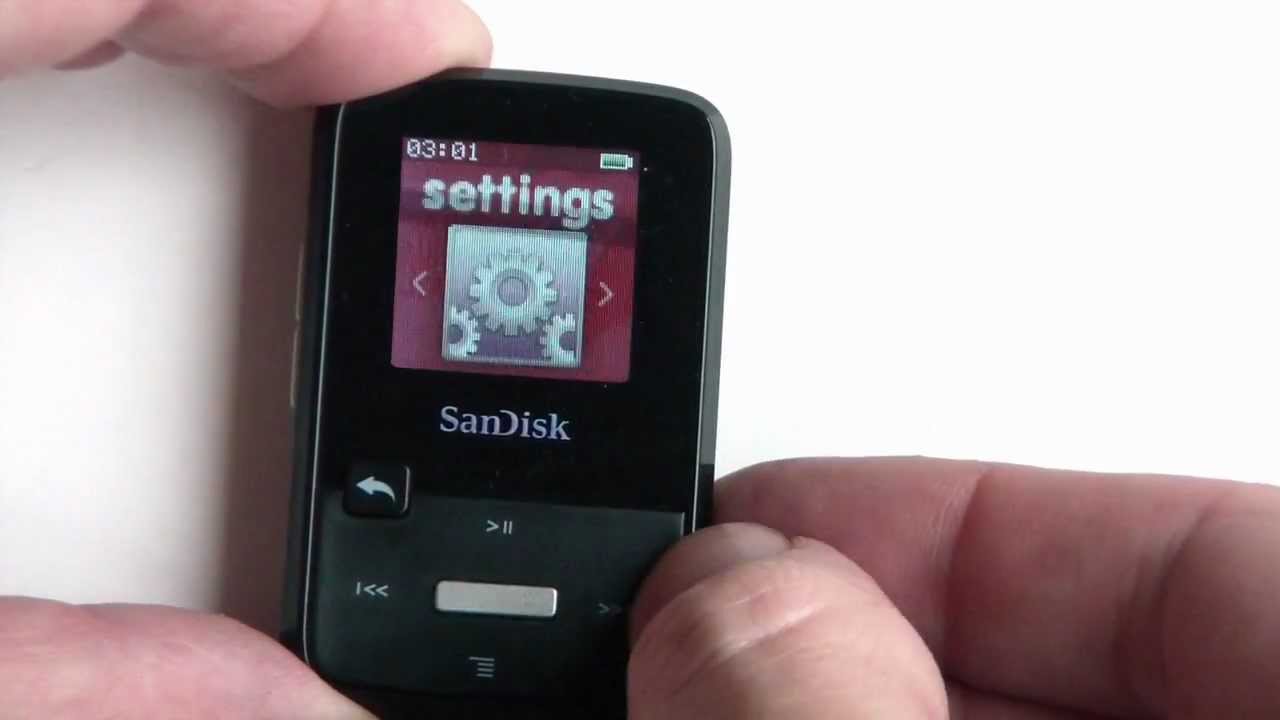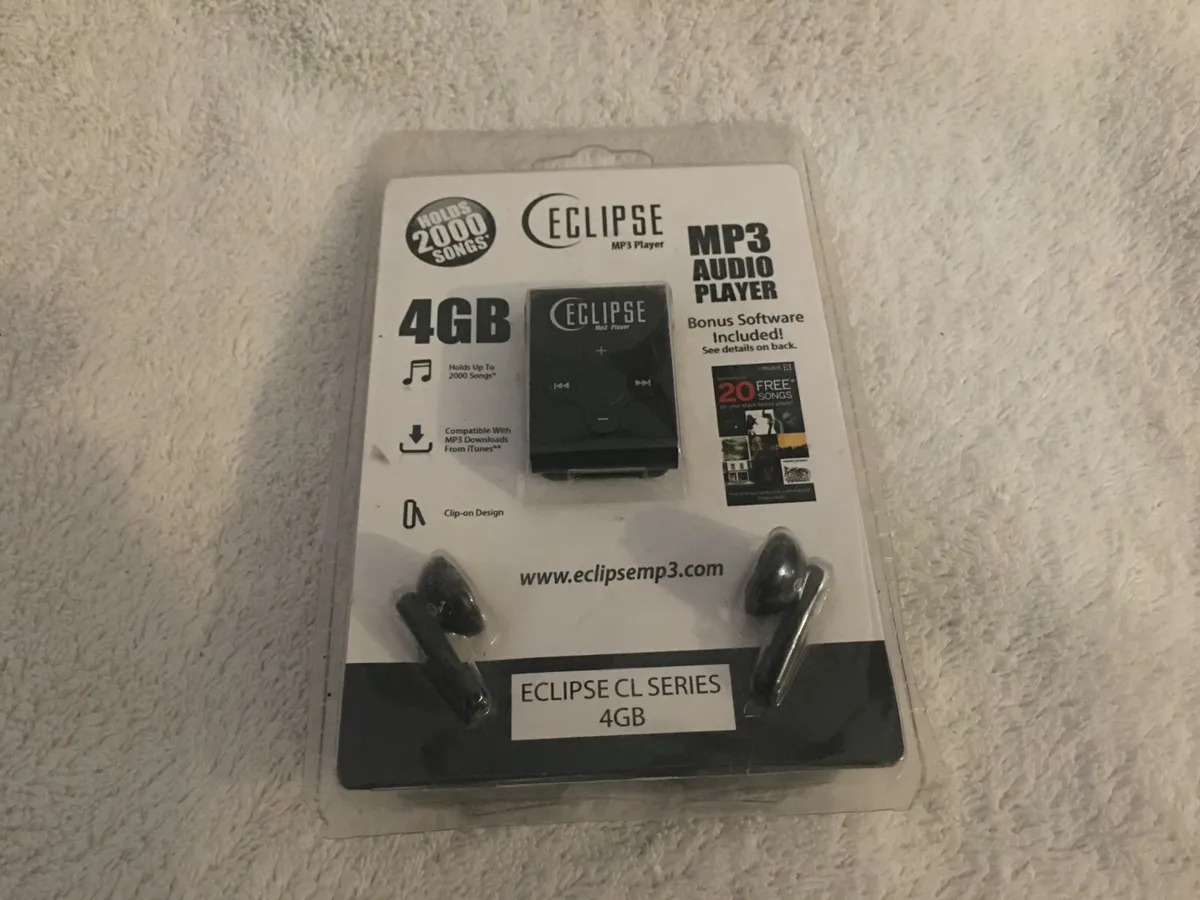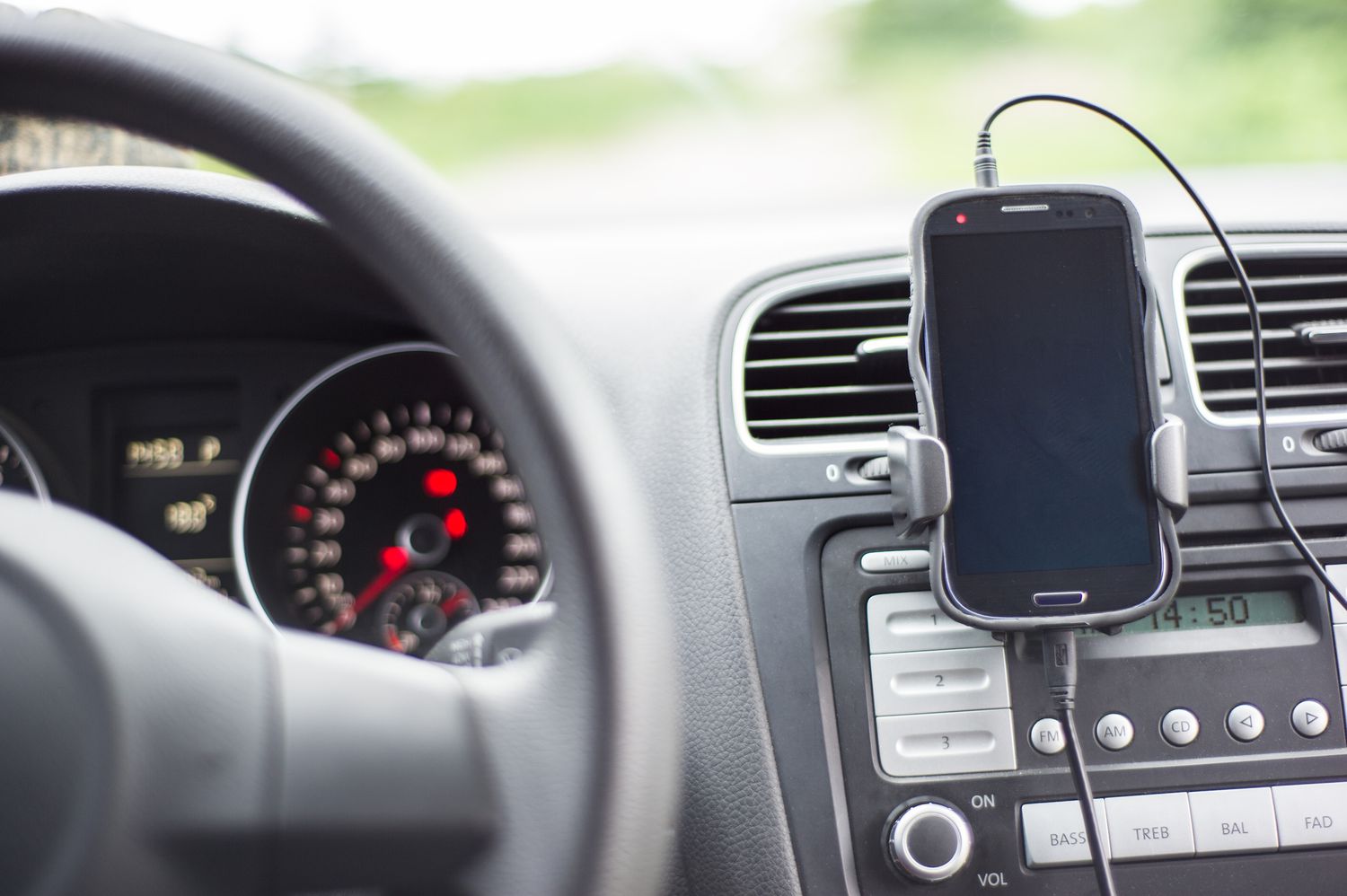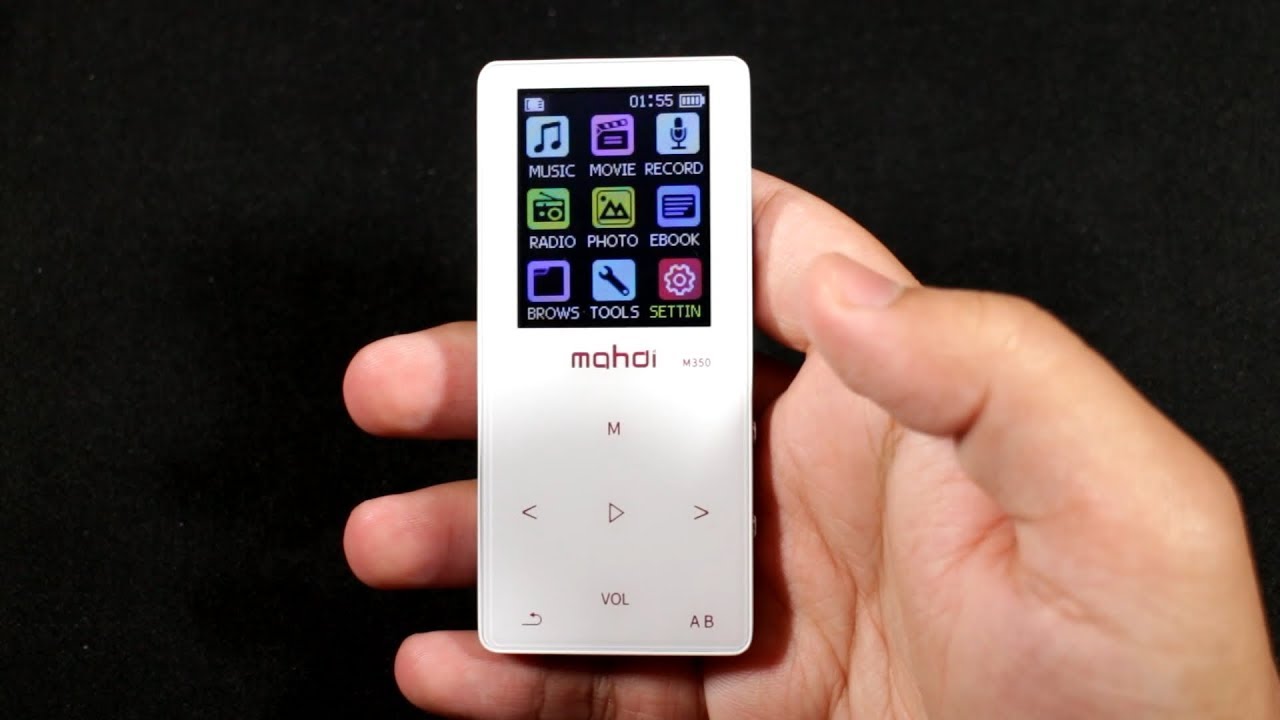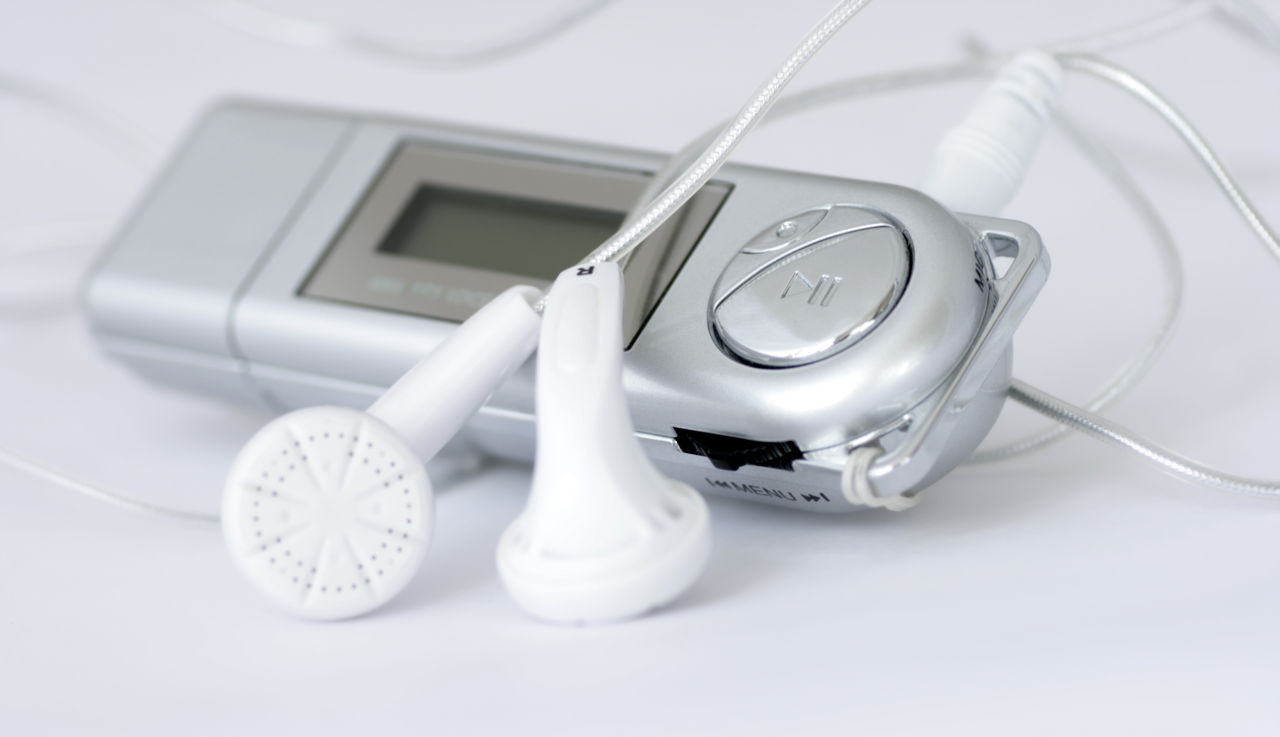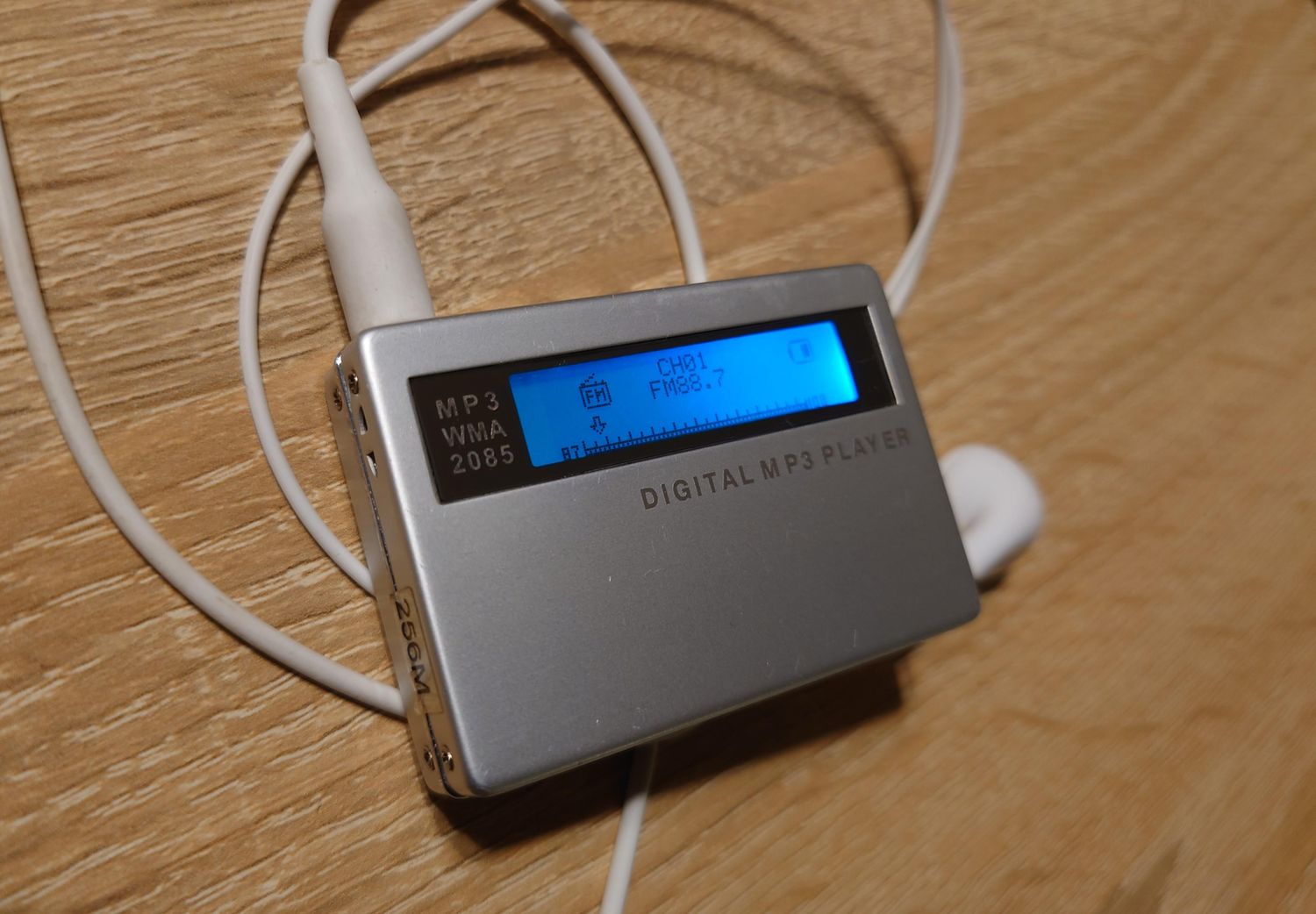Home>Production & Technology>MP3>What Is An MP3 Player
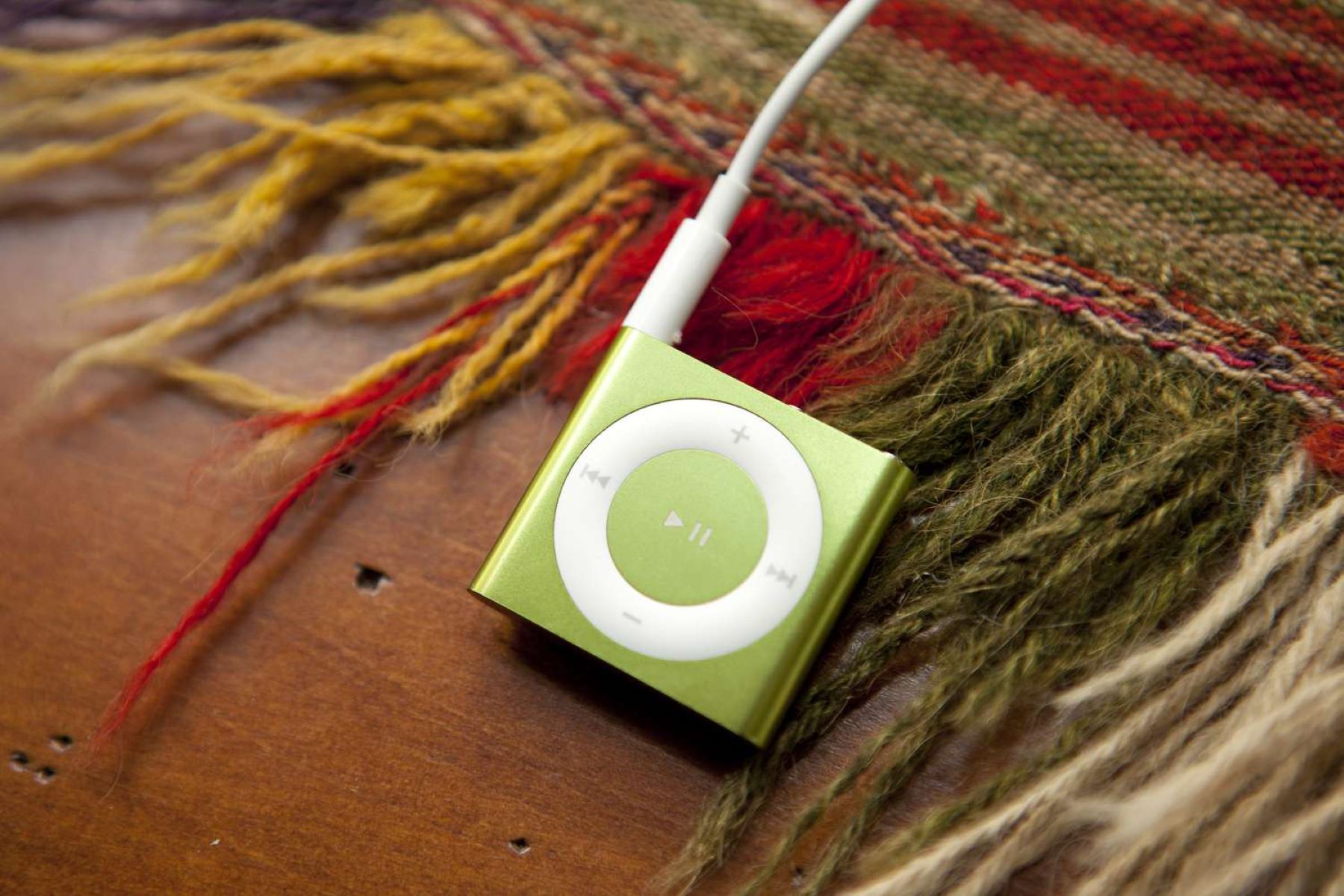

MP3
What Is An MP3 Player
Modified: March 8, 2024
Discover what an MP3 player is and how it revolutionizes portable music. Explore the benefits of MP3 technology for enjoying your favorite music on the go.
(Many of the links in this article redirect to a specific reviewed product. Your purchase of these products through affiliate links helps to generate commission for AudioLover.com, at no extra cost. Learn more)
Table of Contents
Introduction
An MP3 player is a portable electronic device that allows you to listen to your favorite music and audio files on the go. In today’s digital age, MP3 players have become an essential gadget for music enthusiasts and audiophiles. With their compact size and vast storage capacity, these devices have revolutionized the way we enjoy music.
Having an MP3 player means carrying your entire music library in your pocket or bag, giving you the freedom to listen to your favorite tracks anytime and anywhere. Whether you are taking a jog, commuting to work, or relaxing at home, an MP3 player provides a convenient and personalized music experience.
MP3 players have become increasingly popular due to their ease of use, portability, and versatility. Unlike traditional CDs or cassette tapes, MP3 players offer a digital format that allows users to store and organize a large number of audio files in a compact and efficient manner. With the ability to create playlists, shuffle songs, and easily skip between tracks, MP3 players offer a level of convenience and customization that was previously unimaginable.
Another major factor contributing to the popularity of MP3 players is their compatibility with various audio file formats, including the widely used MP3 format. This allows users to transfer and play music files from different sources, such as online music stores, CD collections, or digital downloads, onto their MP3 player. Furthermore, many MP3 players offer additional features and functionalities, such as FM radios, voice recording capabilities, and Bluetooth connectivity, further enhancing their versatility.
As technology continues to advance, MP3 players have evolved to incorporate more features and improvements. Today, you can find MP3 players with touchscreen interfaces, high-quality audio playback, expandable storage options, and even internet connectivity. These advancements have made MP3 players even more appealing to music lovers seeking a seamless and immersive audio experience.
In the following sections, we will delve deeper into the fascinating world of MP3 players, exploring their history, features, advantages, disadvantages, types, and popular brands. So, strap in and get ready to embark on an audio journey like no other!
Definition of an MP3 Player
An MP3 player, also known as a digital audio player, is a portable electronic device designed primarily for playing digital audio files. It is a compact and lightweight device that allows users to store and play a vast collection of music, podcasts, audiobooks, and other audio content.
The term MP3 player derives from the popular audio file format, MP3 (MPEG-1 Audio Layer 3), which revolutionized the way music is encoded and compressed. MP3 files significantly reduce the size of audio data while maintaining high sound quality, making them ideal for storage and playback on portable devices.
An MP3 player typically features a built-in storage capacity, ranging from a few gigabytes to several hundred gigabytes. This storage allows users to transfer their audio files from a computer or other devices onto the MP3 player for offline playback. Some MP3 players also support the use of external memory cards, such as microSD cards, to expand the storage capacity even further.
Although the primary function of an MP3 player is to play audio files, modern models often come with additional features and functionalities. These include digital screens for navigating and selecting music, voice recording capabilities, FM radios, Bluetooth connectivity for wireless headphones, and even internet connectivity for streaming music services.
MP3 players can be controlled using buttons, touchscreens, or a combination of both. They usually have a headphone jack for connecting earphones or headphones, and some models may also include a speaker for direct playback without headphones.
With the advancement of technology, many smartphones now have built-in MP3 player capabilities. However, dedicated MP3 players still possess some distinct advantages. They often offer better audio quality, longer battery life, and a more compact and lightweight design, making them ideal for on-the-go music enthusiasts who prefer a separate device for their audio needs.
Overall, an MP3 player provides a convenient and portable solution for enjoying your favorite music and audio content wherever you go. With their sleek and compact designs, vast storage capacities, and diverse features, MP3 players have become a staple companion for music lovers in the digital age.
History of MP3 Players
The history of MP3 players dates back to the late 1980s and early 1990s, when digital music technologies started to emerge. The development of the MP3 file format by the Moving Picture Experts Group (MPEG) in 1993 played a crucial role in the evolution of portable music players.
The first commercial MP3 player, the MPMan F10, was introduced in 1998 by the Korean technology company SaeHan Information Systems. The MPMan F10 had a storage capacity of 32 MB, which could hold approximately eight songs in the MP3 format. It featured a small LCD screen for navigation and playback controls, and it relied on a parallel port connection to transfer music from a computer.
Following the MPMan F10, other companies entered the MP3 player market, including Creative Labs with their Nomad brand and Diamond Multimedia with their Rio brand. These early MP3 players faced several challenges, including limited storage capacities, slow transfer speeds, and the need for separate software to convert audio files into the MP3 format.
However, as technology progressed, so did the capabilities of MP3 players. In the early 2000s, Apple Inc. introduced the iPod, a groundbreaking MP3 player that revolutionized the industry. The first iPod model was released in 2001 and featured a 5 GB hard drive, a mechanical scroll wheel, and a simple yet intuitive user interface.
The iPod’s seamless integration with Apple’s iTunes software made it incredibly convenient for users to manage and transfer their music collections. With iTunes, users could easily convert audio files into the MP3 format and sync their music library to their iPod. The iPod’s sleek design, large storage capacity, and user-friendly interface quickly made it the go-to choice for music enthusiasts worldwide.
As the popularity of digital music grew, so did the demand for MP3 players. Companies such as Sony, Microsoft, and SanDisk entered the market with their own offerings, each trying to innovate and differentiate their products. Features like color screens, video playback, and expanded storage capacities became standard in the latest MP3 player models.
However, with the rise of smartphones, the demand for standalone MP3 players began to decline. Many consumers found it more convenient to have a single device that could handle multiple functions, including playing music. Despite this shift, dedicated MP3 players continue to exist and cater to individuals who prioritize music quality, battery life, and a distraction-free music experience.
Today, MP3 players have evolved into sleek and feature-packed devices capable of playing not only MP3 files but also other popular audio formats like AAC, WMA, and FLAC. They offer high-quality sound reproduction, expandable storage options, extended battery life, and advanced functionalities like Bluetooth connectivity and internet streaming.
The history of MP3 players showcases the technological advancements and innovations that have shaped the way we listen to music and interact with audio content. From humble beginnings to the modern digital age, MP3 players have come a long way and continue to provide music lovers with a personalized and immersive audio experience.
Features of MP3 Players
MP3 players have evolved over the years, incorporating various features and functionalities to enhance the user experience. While specific features may vary depending on the brand and model, here are some common features found in MP3 players:
- Storage Capacity: MP3 players come with built-in storage ranging from a few gigabytes to several hundred gigabytes. This allows users to store a large number of audio files, including music, podcasts, audiobooks, and more.
- Expandable Storage: Some MP3 players offer the option to expand the storage capacity by using external memory cards, such as microSD cards. This is beneficial for users with extensive music libraries.
- Audio Playback Formats: MP3 players support various audio formats, including MP3, AAC, WMA, FLAC, and more. This ensures compatibility with a wide range of audio files for a seamless listening experience.
- Display: Many MP3 players feature a digital display, which allows users to navigate through their music library, view track information, and make selections. Displays can be monochrome or full-color, with touchscreens becoming more common in newer models.
- Battery Life: Battery life is an important consideration for MP3 players, as it determines how long they can be used before needing to be recharged. Depending on the model, battery life can range from several hours to more than 50 hours of continuous audio playback.
- Playback Controls: MP3 players come with dedicated buttons or touch-sensitive controls that allow users to start, pause, skip, and adjust the volume of their audio files. Some models may also offer additional controls for shuffling songs, creating playlists, and repeat playback.
- Connectivity Options: Most MP3 players have a headphone jack for connecting earphones or headphones. Additionally, many models offer Bluetooth connectivity, allowing wireless pairing with compatible headphones, speakers, and car audio systems.
- Additional Features: Depending on the model, MP3 players may include other features such as FM radios for listening to your favorite stations, voice recording capabilities for capturing audio notes or lectures, and even internet connectivity for streaming music services.
These features contribute to the overall functionality and versatility of MP3 players, enabling users to enjoy their favorite audio content with ease and convenience. Whether you’re a music lover, podcast enthusiast, or avid audiobook listener, MP3 players offer a portable and personalized audio experience.
Advantages of Using an MP3 Player
MP3 players offer numerous advantages that make them a popular choice for music lovers and audio enthusiasts. Here are some key advantages of using an MP3 player:
- Portability: MP3 players are compact and lightweight, making them highly portable. You can easily carry them in your pocket, bag, or armband, allowing you to enjoy your music on the go, whether you’re exercising, commuting, or traveling.
- Large Storage Capacity: MP3 players offer ample storage capacity to hold a vast music library. Depending on the model and storage configuration, you can store hundreds or even thousands of songs, podcasts, or audiobooks, ensuring you have a wide selection of audio content at your fingertips.
- Customization Options: MP3 players allow you to create personalized playlists, shuffle songs, and organize your music library according to your preferences. This level of customization allows you to curate your own music experience and tailor it to your mood or activity.
- Better Sound Quality: Dedicated MP3 players often provide superior sound quality compared to smartphones or other multitasking devices. They are designed with specialized audio circuitry, higher-quality DACs (Digital-to-Analog Converters), and headphone amplifiers, resulting in a more immersive and detailed audio experience.
- Prolonged Battery Life: MP3 players are designed to optimize battery life for audio playback. They typically have longer battery life compared to smartphones, allowing you to enjoy hours of uninterrupted music without worrying about running out of power.
- Offline Playback: With an MP3 player, you can store and play your favorite music and audio files offline. This means you don’t need a constant internet connection, making it ideal for situations where Wi-Fi or cellular data may be limited or unavailable.
- Minimal Distractions: By using a dedicated MP3 player, you can minimize distractions and focus solely on enjoying your music. Unlike smartphones that are often filled with notifications, calls, and other distractions, MP3 players provide a dedicated and uninterrupted music experience.
- Compatibility: MP3 players are compatible with various audio file formats, including the widely used MP3 format. This makes it easier to transfer and play music files from different sources, such as online music stores, CD collections, or digital downloads.
- Saves Phone Battery Life: By using an MP3 player for your music needs, you can save the battery life of your smartphone. Music playback can be quite demanding on a smartphone’s battery, so having a separate device for music can help extend the battery life of your phone, especially during long trips or outings.
These advantages highlight why MP3 players continue to be a favored choice for music enthusiasts. Whether you’re seeking portability, customization, superior sound quality, or minimal distractions, an MP3 player offers a dedicated and immersive audio experience that enhances your enjoyment of music and audio content.
Disadvantages of Using an MP3 Player
While MP3 players offer numerous advantages, they also come with a few disadvantages that you should consider. Here are some potential drawbacks of using an MP3 player:
- Limited Functionality: Compared to smartphones or other multifunctional devices, MP3 players have limited capabilities. They are primarily designed for playing audio files and may lack features such as internet browsing, social media access, or advanced gaming.
- Smaller Screens: MP3 players usually have smaller screens compared to smartphones or tablets. This can make it challenging to navigate through large music libraries or display detailed album artwork and song information.
- Dependency on Computer: To transfer music files onto an MP3 player, you often need to connect it to a computer via USB. This reliance on a computer may be inconvenient for some users who prefer to manage their music directly from their device.
- Limited Connectivity Options: While some MP3 players offer Bluetooth connectivity, not all models support this feature. This can limit your options for wirelessly connecting to headphones, speakers, or other audio devices.
- Storage Capacity Constraints: Although MP3 players come with various storage capacities, some users may find them insufficient for their extensive music collections. While expandable storage options exist, it may require purchasing additional memory cards.
- Obsolete Technology: As the popularity of smartphones and streaming services continue to rise, the demand for dedicated MP3 players has declined. This may result in limited availability of newer models and accessories, and a decrease in support and updates for older devices.
- Additional Device to Carry: Carrying an MP3 player along with your smartphone, wallet, keys, and other essentials may be cumbersome for some users. Consolidating your music needs onto your smartphone may provide a more streamlined and simplified experience.
- Cost: While some MP3 players are budget-friendly, others with advanced features and high storage capacities can be costly. Depending on your requirements and preferences, investing in an MP3 player may not be financially feasible.
It is important to consider these disadvantages when deciding whether an MP3 player is the right choice for you. Assess your needs and priorities—such as the desire for advanced functionality, larger screens, or seamless integration with other digital services—to determine if the limitations of an MP3 player outweigh the advantages.
Ultimately, the decision to use an MP3 player depends on your personal preferences, lifestyle, and the specific features you prioritize in a portable music device.
Types of MP3 Players
MP3 players come in different types, each catering to different needs and preferences. Here are some common types of MP3 players available in the market:
- Traditional MP3 Players: Traditional MP3 players are standalone devices dedicated solely to playing audio files. They have physical buttons or touch controls for navigation and playback and offer basic features like storing and organizing music files. They are compact, lightweight, and offer excellent sound quality.
- Hard Drive-based MP3 Players: Hard drive-based MP3 players, also known as HDD players, feature a built-in hard drive for storing audio files. These players offer larger storage capacities, typically ranging from 20 GB to 160 GB or more. They are ideal for users with extensive music collections who prioritize storage capacity over portability.
- Flash-based MP3 Players: Flash-based MP3 players, also known as solid-state players, use flash memory to store audio files. They are small, lightweight, and offer superior shock resistance compared to hard drive-based players. Flash-based players come in various storage capacities and are a popular choice for users seeking a balance between portability and storage space.
- Compact MP3 Players: Compact MP3 players, often referred to as “clip” or “shuffle” players, are small, lightweight devices designed for convenience and portability. They typically lack screens and rely on shuffle playback, making them suitable for users who prefer a simple and compact player for music on the go. Compact MP3 players often have built-in clips, allowing users to attach them to clothing or accessories.
- Sports MP3 Players: Sports MP3 players are specifically designed for active individuals who engage in physical activities. These players are sweat-resistant, durable, and often feature a secure and ergonomic design. They may include extra features like pedometers, heart rate monitors, and water resistance to enhance the overall fitness experience.
- Smartphone MP3 Players: Many smartphones today have built-in MP3 player capabilities. These devices offer the convenience of having both communication and audio playback functionalities in a single device. With the availability of music streaming services, smartphone MP3 players have become a popular choice for those who want to access a vast library of songs anytime, anywhere.
Each type of MP3 player has its own advantages and limitations, so it’s important to consider factors such as storage capacity, portability, features, and intended use when choosing the right one for your needs. Whether you prioritize storage space, compactness, or additional functionalities, there is an MP3 player type that will suit your preferences.
How to Use an MP3 Player
Using an MP3 player is relatively straightforward, even for first-time users. Here is a general guide on how to use an MP3 player:
- Charge the Device: Before using your MP3 player, ensure that it is fully charged. Connect it to a power source using the provided USB cable and let it charge until the battery is at its maximum capacity.
- Transfer Music: Connect your MP3 player to your computer using the USB cable provided. Your computer should recognize the device, and you can either use the software provided with the player or drag and drop music files directly into the appropriate folder on the device. Organize your music into folders or playlists if desired.
- Navigation: Once your music is transferred, familiarize yourself with the navigation controls on your MP3 player. This can include buttons or touch controls to navigate through menus, select songs, adjust volume, and pause or play your music.
- Playback: To play music, browse through your music library using the navigation controls. Select the desired song or playlist and press the play button or tap on the touchscreen to begin playback. Use the skip buttons to go to the next or previous tracks, and adjust the volume as needed.
- Settings and Customization: Explore the settings menu on your MP3 player to customize your audio experience. Adjust options such as audio equalizer settings, playback modes (such as shuffle or repeat), and display settings according to your preferences.
- Additional Features: If your MP3 player has additional features, such as an FM radio or voice recording, familiarize yourself with how to access and use those features. Refer to the user manual that came with your MP3 player for specific instructions on operating these functions.
- Headphones and Accessories: Connect your headphones or earphones to the headphone jack of your MP3 player. Ensure they are securely plugged in for optimal audio output. Consider investing in high-quality headphones or portable speakers to enhance your audio experience.
- Maintenance: Keep your MP3 player clean and free from dust and debris by wiping it with a soft cloth regularly. Avoid exposing it to extreme temperatures and moisture, as this can damage the device. Consider using a protective case or sleeve to safeguard your MP3 player when not in use or during transportation.
Remember to refer to the user manual specific to your MP3 player for detailed instructions and tips on using its particular features and functionalities. By following these basic steps, you’ll be able to enjoy your favorite music and audio content using your MP3 player effortlessly.
Popular MP3 Player Brands
Several brands have made a significant impact in the MP3 player market with their innovative designs, advanced features, and commitment to delivering high-quality audio experiences. Here are some popular MP3 player brands:
- Apple iPod: Apple’s iPod revolutionized the portable music industry and set the gold standard for MP3 players. Known for their sleek design, user-friendly interface, and seamless integration with iTunes, iPods offer a wide range of storage capacities, touchscreen displays, and advanced features such as Bluetooth connectivity and internet streaming.
- Sony Walkman: Sony’s Walkman series has a rich history in portable audio, dating back to its iconic cassette players. Today, Sony Walkman MP3 players are renowned for their exceptional sound quality, stylish designs, and advanced audio technologies. They are built with high-end digital audio components, support various audio formats, and offer premium features like noise cancellation and high-resolution audio playback.
- SanDisk: SanDisk is a leading manufacturer of flash memory products, including MP3 players. SanDisk MP3 players are known for their reliable performance, expansive storage options, and user-friendly interfaces. They offer a range of models suitable for different needs, from compact and affordable players to high-capacity devices with expandable storage.
- Creative Zen: Creative Zen MP3 players are popular for their great audio quality, extensive battery life, and intuitive user interfaces. They feature vibrant displays, support a wide range of audio formats, and often come with additional features such as FM radios, voice recorders, and Bluetooth connectivity.
- Fiio: Fiio specializes in creating high-fidelity audio products, including digital audio players (DAPs). Fiio MP3 players are known for their exceptional sound quality, support for lossless audio formats, and robust build quality. They often have expandable storage options, touchscreen displays, and advanced features for audiophiles seeking the ultimate audio experience.
- Microsoft Zune: Although no longer in production, Microsoft’s Zune series gained popularity for its unique features and attractive designs. Zune MP3 players offered wireless sync capabilities, social sharing features, and a user-friendly interface. While new models are no longer available, existing Zune devices still offer a reliable and enjoyable music experience.
These are just a few of the many popular MP3 player brands available in the market. When choosing an MP3 player, consider factors such as audio quality, storage capacity, user interface, and additional features that suit your preferences and needs. Each brand brings its own strengths and unique characteristics, aiming to provide a satisfying and immersive music listening experience.
Future of MP3 Players
The future of MP3 players continues to evolve as technology progresses and consumer preferences shift. While smartphones and streaming services have become increasingly popular for music consumption, dedicated MP3 players still have a place in the market. Here are some potential trends and developments that may shape the future of MP3 players:
- Enhanced Audio Technologies: Future MP3 players may incorporate advanced audio technologies to deliver even better sound quality. This could involve the integration of high-resolution audio support, improved DACs, and amplifiers, as well as the inclusion of digital signal processing (DSP) for enhanced sound customization.
- Wireless Connectivity: Bluetooth and Wi-Fi connectivity have already become common features in many MP3 players. Going forward, there may be further advancements in wireless technologies, enabling seamless connectivity with a wider range of devices, such as smart speakers, wireless headphones, and car audio systems.
- Increased Storage Capacities: As demand for larger music libraries continues to grow, future MP3 players may offer even higher storage capacities. With advancements in flash memory technology and the decreasing cost per gigabyte, it is likely that MP3 players will provide users with more storage space to store their extensive audio collections.
- Improved Battery Life: Battery life is always an important aspect of portable devices, and future MP3 players may see improvements in this area. Advancements in battery technology could result in longer playback times, allowing users to enjoy continuous music playback for extended periods without needing to recharge.
- Integration with Smart Assistants: With the rise of voice-activated smart assistants, future MP3 players may incorporate compatibility with virtual assistants like Siri, Google Assistant, or Amazon Alexa. Users may be able to control their MP3 players and access their music libraries through voice commands, enhancing the overall user experience.
- Gesture Controls and Biometrics: MP3 players could potentially utilize gesture-based controls or biometric sensors to provide innovative ways of interacting with the device. Gesture controls may allow users to navigate through music playlists or adjust volume with simple hand movements, while biometric sensors could offer features like heart rate monitoring or gesture recognition.
- Integration with Streaming Services: Streaming music services have become a popular way of consuming music, and future MP3 players may seamlessly integrate with these services. This could provide users with access to a vast library of music while still delivering the benefits of a dedicated music player, such as better sound quality and offline playback capabilities.
While the future of MP3 players may evolve to meet the changing needs and preferences of consumers, there will likely always be a demand for dedicated portable music devices. They continue to offer superior audio quality, customizable music experiences, and the convenience of having a separate device solely dedicated to playing music.
Ultimately, the future of MP3 players will be shaped by advancements in audio technology, connectivity, and user interface design, ensuring that music enthusiasts can continue to enjoy their favorite tunes with the best possible experience.
Conclusion
MP3 players have revolutionized the way we enjoy music and audio content, offering a portable and personalized listening experience. Despite the rise of smartphones and streaming services, dedicated MP3 players continue to be popular among music enthusiasts and audiophiles. These devices provide a range of advantages, including portability, large storage capacities, customization options, superior sound quality, and prolonged battery life.
There are various types of MP3 players available, each catering to different needs and preferences. From traditional MP3 players to compact clip players and sports-oriented devices, there is an option for every user. Popular brands like Apple iPod, Sony Walkman, and SanDisk offer sleek designs, advanced features, and exceptional audio quality, ensuring a satisfying music experience.
While MP3 players face some limitations, such as limited functionality and smaller screens compared to smartphones, they remain a convenient choice for those seeking a dedicated music device. The future of MP3 players looks promising, with potential developments in enhanced audio technologies, wireless connectivity, increased storage capacities, improved battery life, integration with smart assistants, and gesture controls.
As technology continues to advance, MP3 players will continue to adapt and evolve, providing music lovers with the ability to enjoy their favorite tracks and audio content wherever they go. Whether you prefer a compact device for on-the-go convenience or a high-end player for audiophile-quality sound, MP3 players offer a range of options to suit your needs.
Ultimately, the enjoyment of music is a personal experience, and MP3 players play a vital role in ensuring that individuals can have a personalized and immersive audio journey. So, whether you’re an avid music collector, a casual listener, or a fitness enthusiast, an MP3 player is a fantastic companion to add to your digital arsenal.



